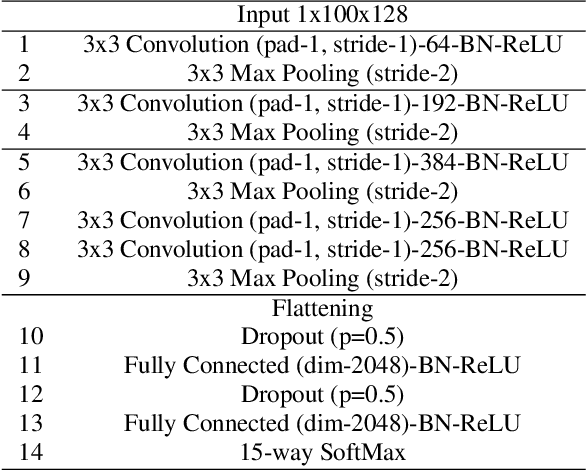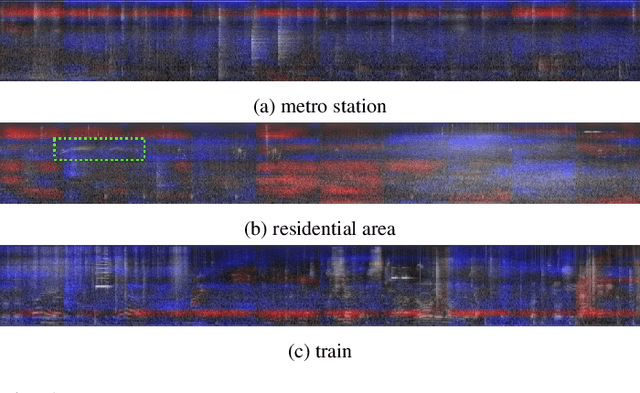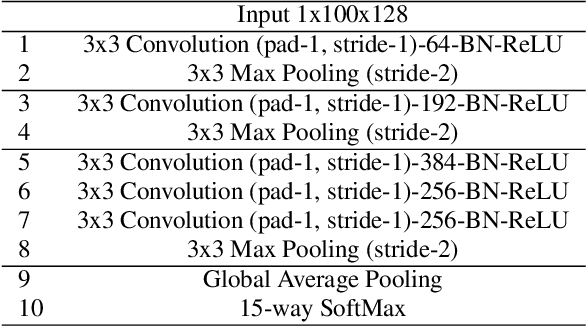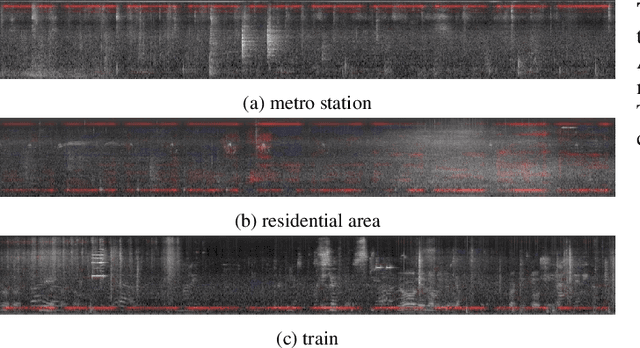Enhancing Sound Texture in CNN-Based Acoustic Scene Classification
Paper and Code
Jan 06, 2019



Acoustic scene classification is the task of identifying the scene from which the audio signal is recorded. Convolutional neural network (CNN) models are widely adopted with proven successes in acoustic scene classification. However, there is little insight on how an audio scene is perceived in CNN, as what have been demonstrated in image recognition research. In the present study, the Class Activation Mapping (CAM) is utilized to analyze how the log-magnitude Mel-scale filter-bank (log-Mel) features of different acoustic scenes are learned in a CNN classifier. It is noted that distinct high-energy time-frequency components of audio signals generally do not correspond to strong activation on CAM, while the background sound texture are well learned in CNN. In order to make the sound texture more salient, we propose to apply the Difference of Gaussian (DoG) and Sobel operator to process the log-Mel features and enhance edge information of the time-frequency image. Experimental results on the DCASE 2017 ASC challenge show that using edge enhanced log-Mel images as input feature of CNN significantly improves the performance of audio scene classification.
 Add to Chrome
Add to Chrome Add to Firefox
Add to Firefox Add to Edge
Add to Edge